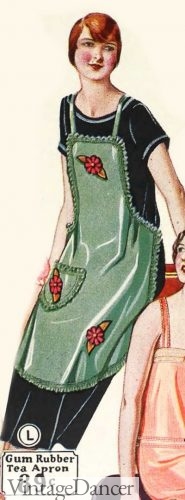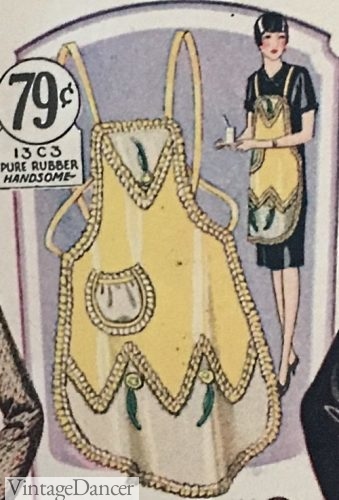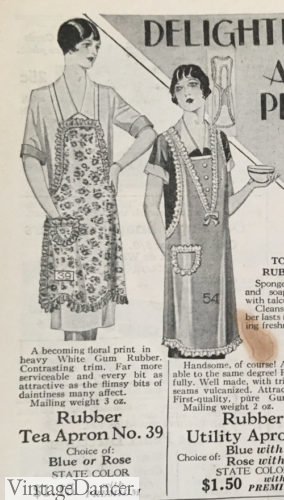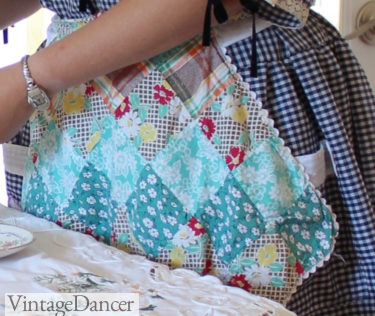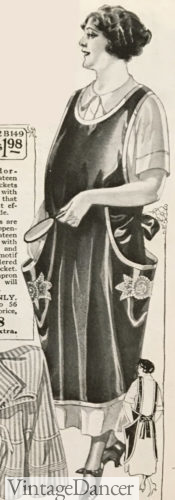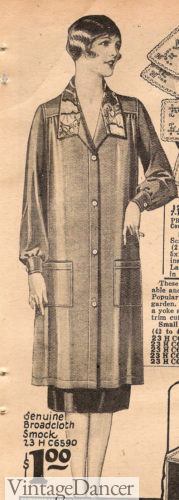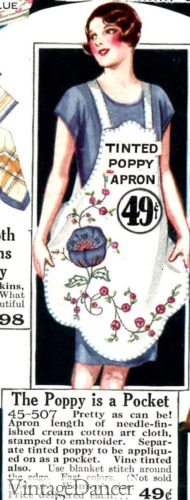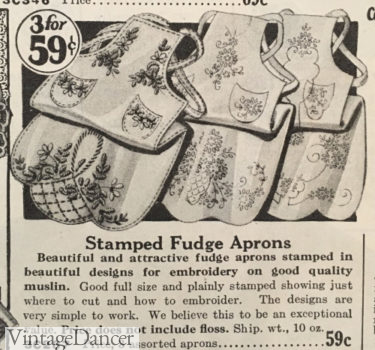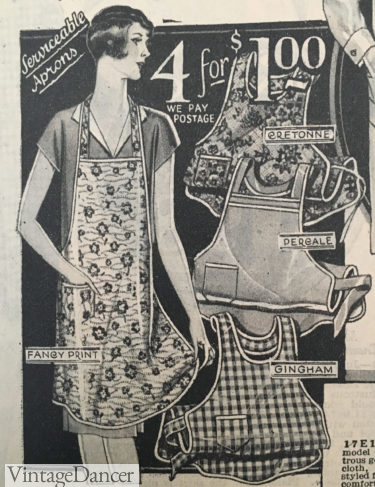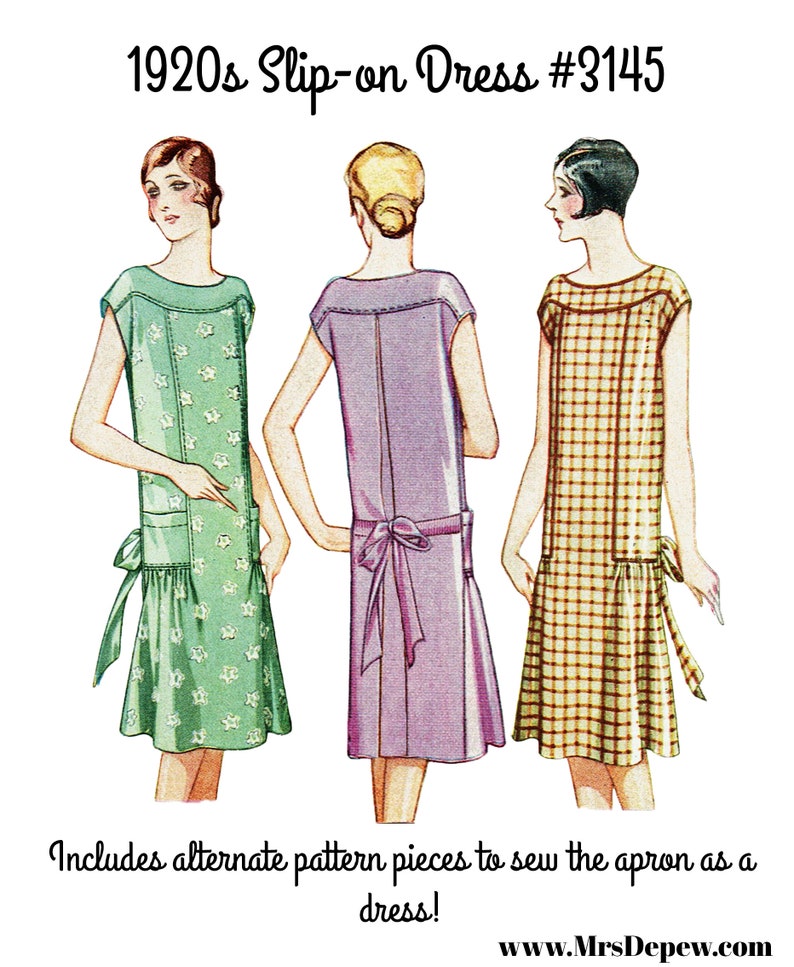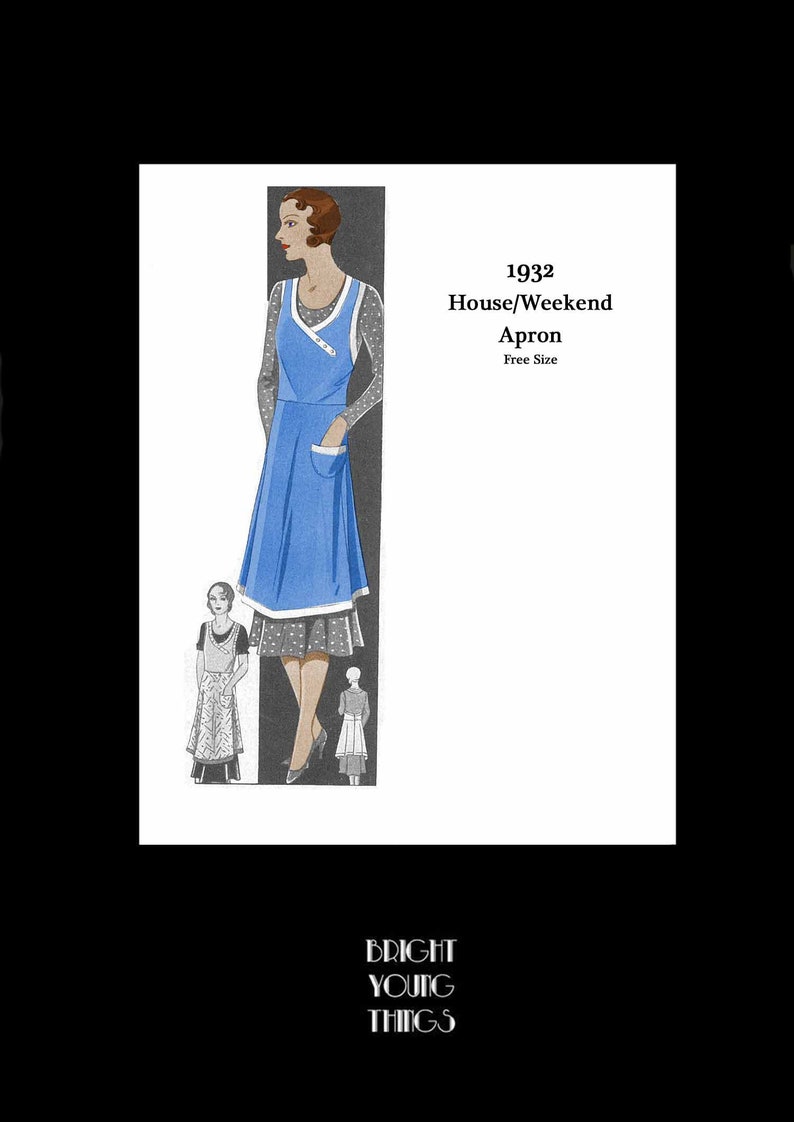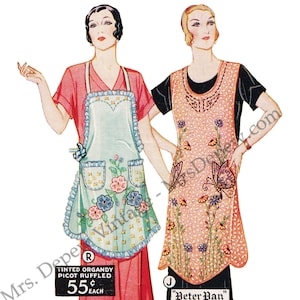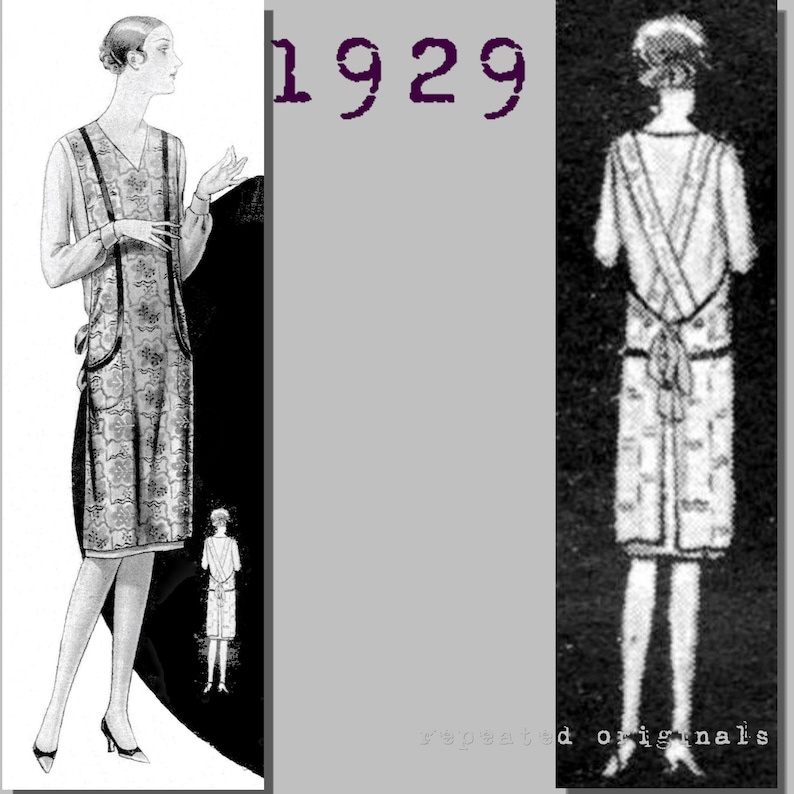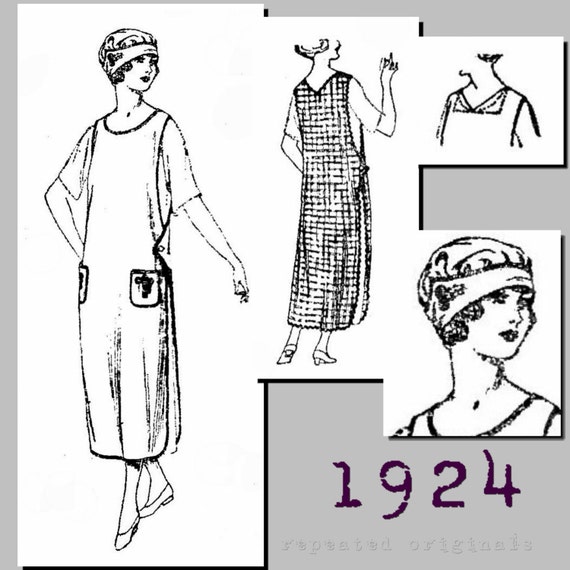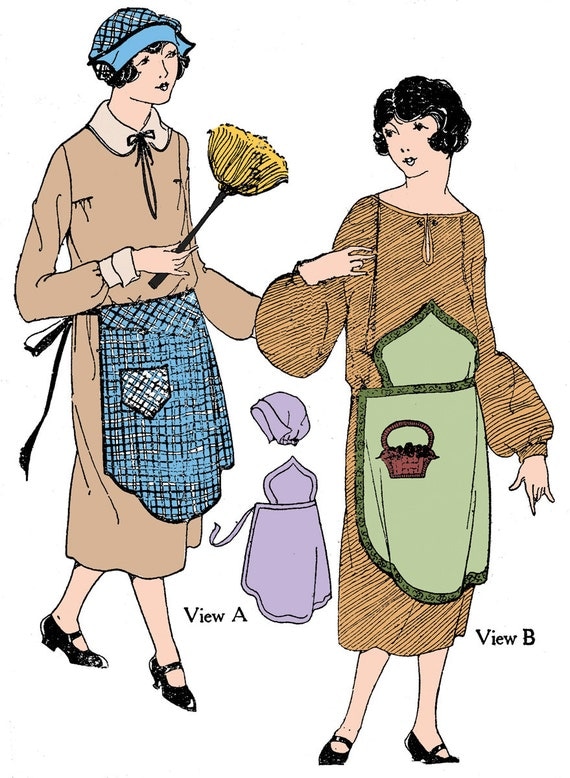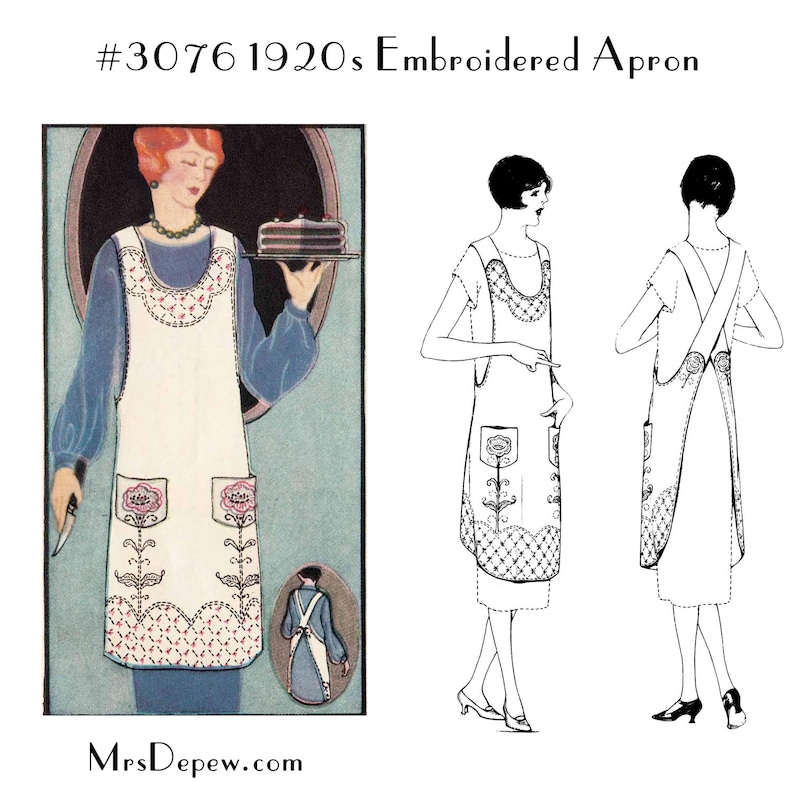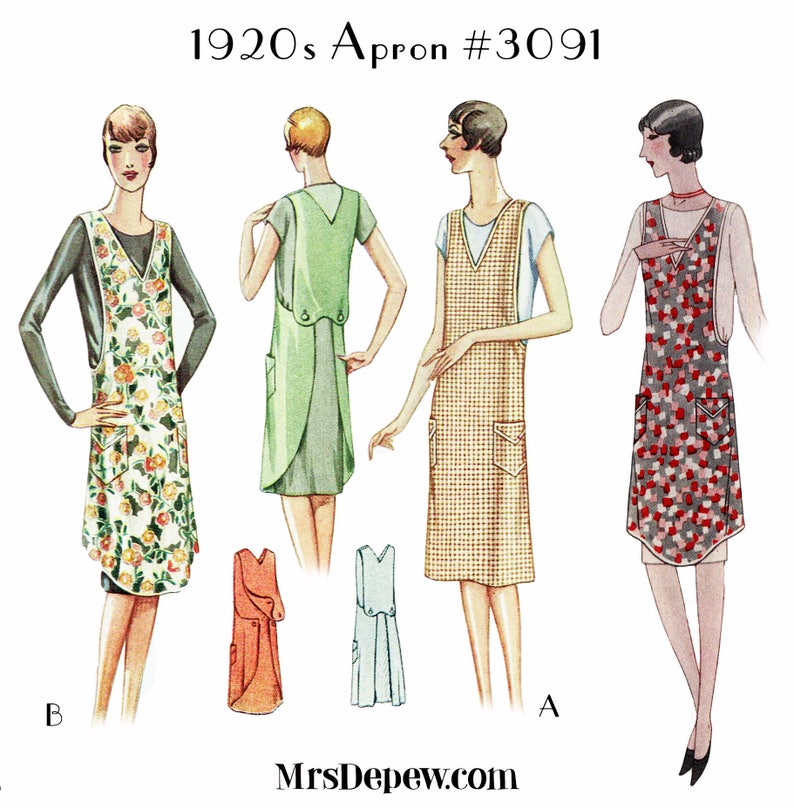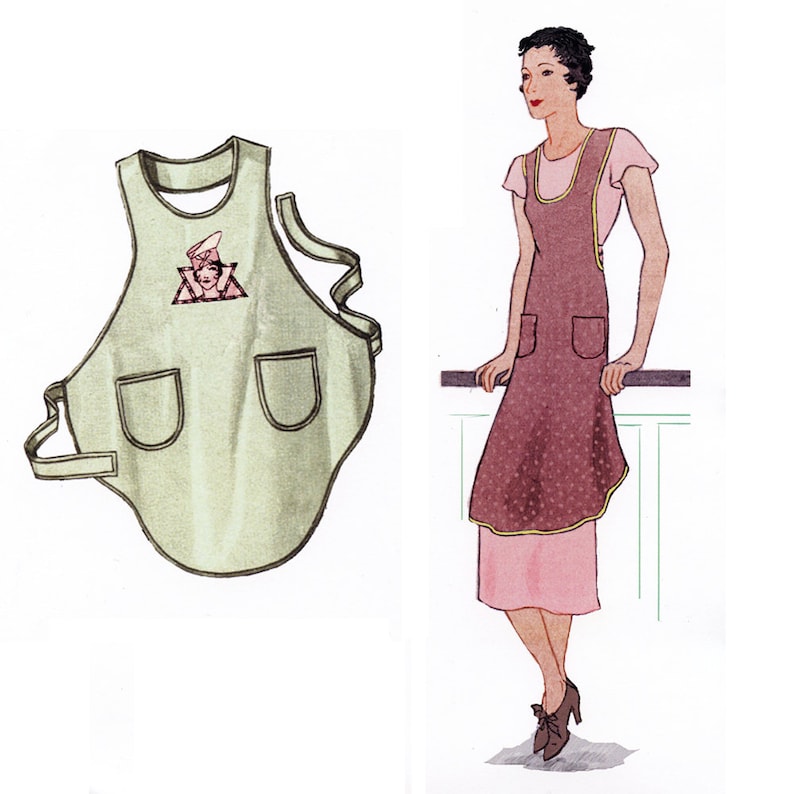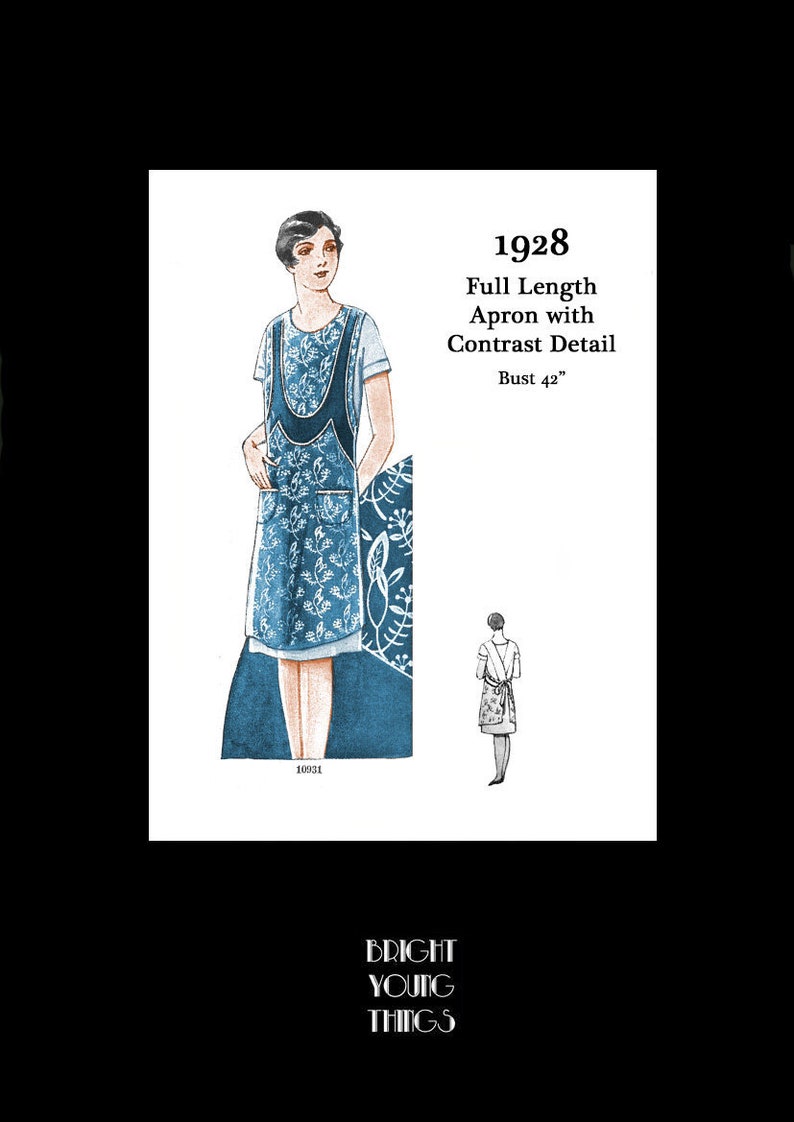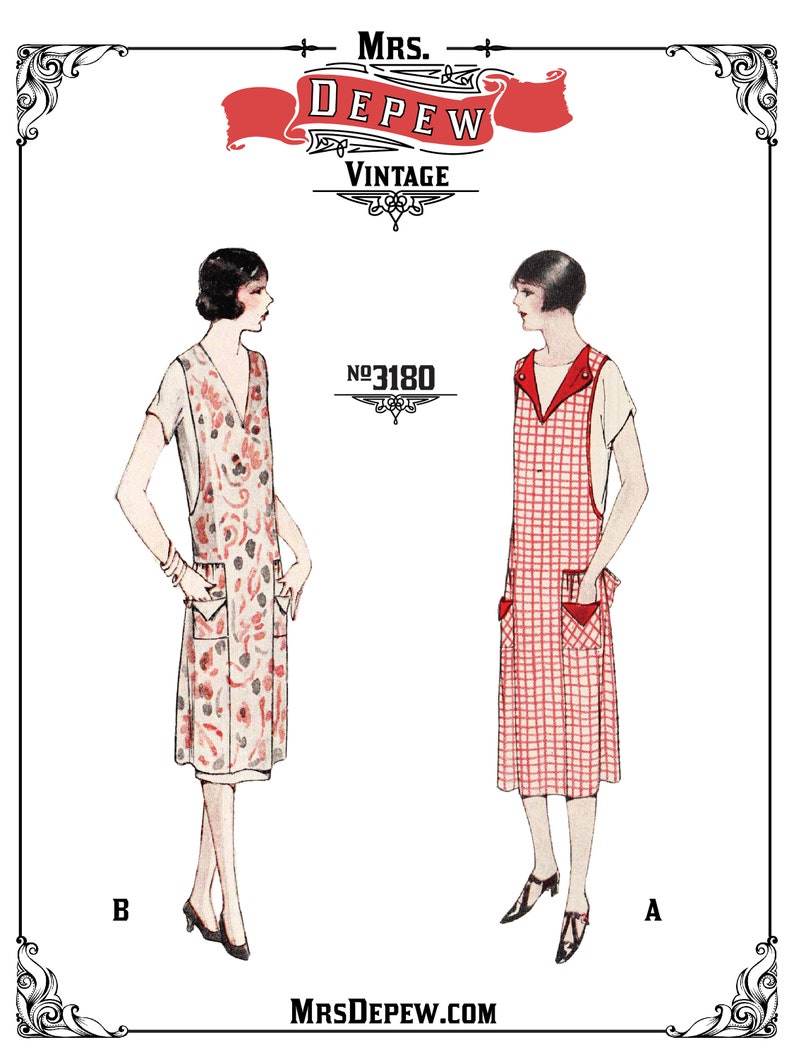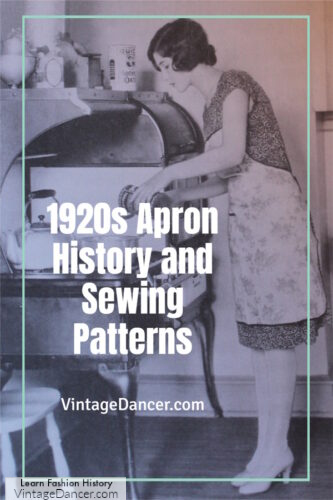
We can’t talk about 1920s house dresses without including a house apron. Always worn as a pair, the versatile apron kept house dresses clean and wearable for a week or more before washing. 1920s aprons were as long and shapeless as the dresses underneath. Aprons served many purposes at home, making each unique to the task.
A cooking apron was almost the length of the dress or a little shorter. It usually did not have pockets and sometimes not even arm straps. The “pin on” apron pinned on to whatever dress she was wearing. Its job was to protect against food splatter and act as a towel to dry off wet hands.
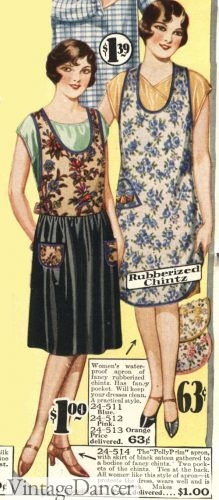
1928 satin skirt with chintz top apron and floral rubber apron
If she was doing dishes or wet cleaning, a rubberized chintz fabric apron was the thing to wear. And if she was doing laundry, the half “clothespin” apron with one or two large pockets over the front held all the clothes pins while hanging laundry outside. See this tutorial on how to make a clothespin apron. Or see this one on making a cross strap apron (too cute!).
- 1926 gum rubber apron
- 1928 rubber apron
A general apron for all types of work was the standard long apron with two large patch pockets and either cross straps or ties in the back. Some came in V-neck slip over models without ties.
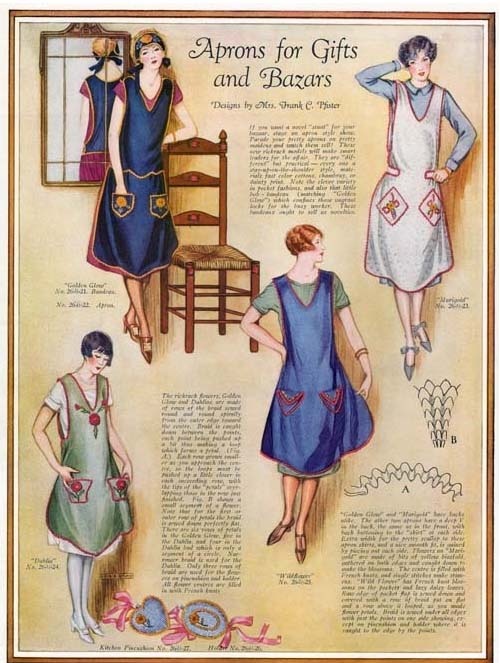
Round edge 1920s aprons with shaped patch pockets. Upper left woman wearing a matching kitchen cap in the headband style.
Pretty scrap trim and hand embroidery make fancier “tea aprons” worn while serving your guest’s tea and sandwiches. Home magazines gave away patterns for aprons since they usually didn’t require a complex paper pattern to be mailed, although there were plenty of those too. Tea aprons were often trimmed in ruffles and lace. My grandmother’s homemade half tea apron was made from scraps of dress fabrics and trimmed in rick rack.
- 1928 tea aprons with ruffled edges
- My grandmother’s patchwork tea apron
A few house dresses came in the “apron dress” style. They looked like a dress on the front (with sleeves) but straps crossed in the back for the apron fit. These were the primary style in the early 1920s.
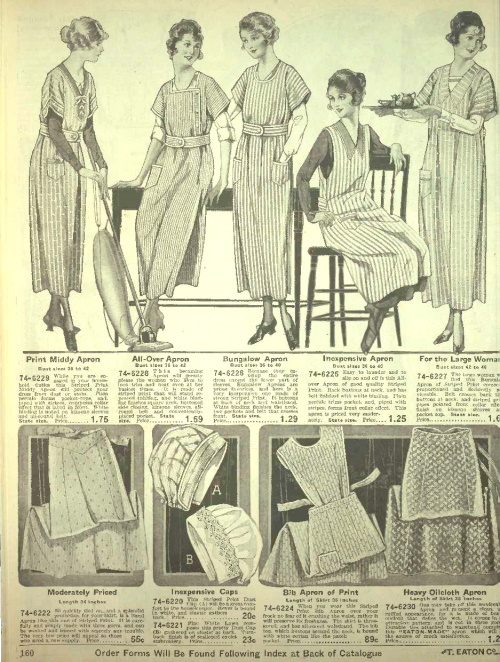
1920 all over aprons and caps
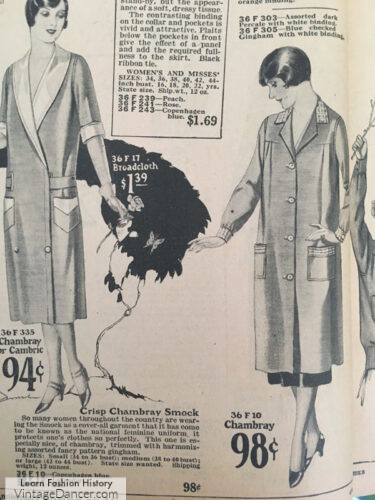
1927 wrap and smock aprons
By the mid ’20s, the smock apron with long sleeves and a button front became the new all over the apron. It was mostly used by artists and for very dusty jobs. Many working women were given smocks to wear in factories.
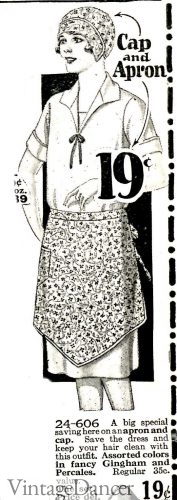
1928 half apron and matching cap
Some kitchen aprons came with matching kitchen caps. It was common for servants to wear caps as part of their wardrobe. Each house had its own signature uniform and cap based on job and status. They could look like traditional mop caps, a headscarf, or crescent shape small hat. Some were wide headbands tied to keep hair back but not entirely covered.
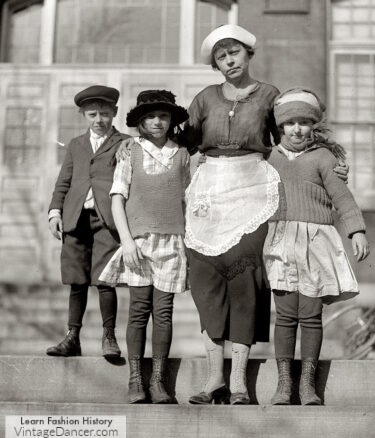
1921, a nanny wears a half apron and headpiece
Learn more about 1920s nurse uniforms, maid uniforms, and waitress uniforms and aprons here.
More 1920s Aprons
- 1922 apron with heart shaped pockets
- 1923 laundry apron with large pockets
- 1927 smock apron
- 1928 decorated apron
- 1928 stamped aprons ready for embroidery
- 1929 rubber or cloth aprons
Buy or Sew a 1920s Apron
Debbie Sessions has been teaching fashion history and helping people dress for vintage themed events since 2009. She has turned a hobby into VintageDancer.com with hundreds of well researched articles and hand picked links to vintage inspired clothing online. She aims to make dressing accurately (or not) an affordable option for all. Oh, and she dances too.
